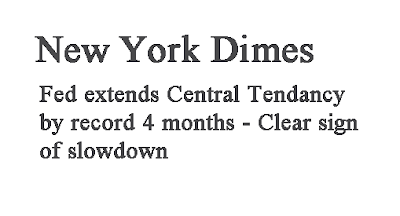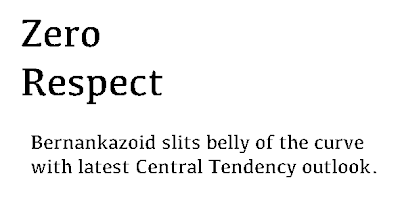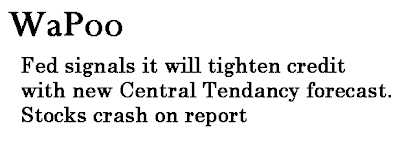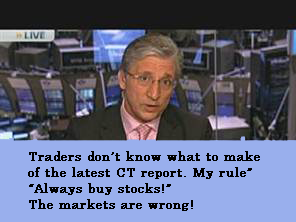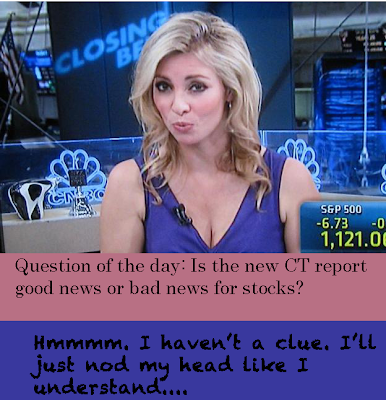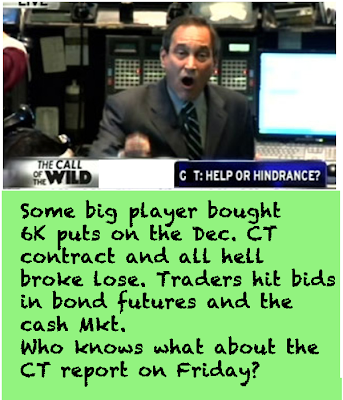Must read – after some serious discussion, this gets very funny. ~ Ilene
Courtesy of Bruce Krasting.
 It’s been about a week since the Federal Reserve announced its new policy of providing information to the public regarding the direction of US interest rates. The new policy is not, generally, a surprise. The Wall Street Journal’s Jon Hilsenrath told us something was coming weeks ago. I've been pondering whether this is a positive or a negative development. I’ve concluded that this step by the Fed will backfire and will prove to be a mistake.
It’s been about a week since the Federal Reserve announced its new policy of providing information to the public regarding the direction of US interest rates. The new policy is not, generally, a surprise. The Wall Street Journal’s Jon Hilsenrath told us something was coming weeks ago. I've been pondering whether this is a positive or a negative development. I’ve concluded that this step by the Fed will backfire and will prove to be a mistake.
It’s tough to argue against a policy of more disclosure by the Fed. The members are a secretive bunch to begin with. Most people have a level of distrust of the Fed. More information about what they are doing and why, would be helpful. However, I believe the decision to provide more info has nothing to do with the Fed wanting to be more open and lovable. The Fed has taken this step in an effort to make its current policy decisions more effective.
I think any policy of the Federal Reserve should be designed to stand the test of time. It must be effective in all anticipated future conditions. The move by the Fed may well achieve the desired short-term objectives. Businesses, investors and individuals will have a greater degree of certainty regarding the future direction and timing of changes in interest rates. On balance, the additional information should have mildly positive consequences on new capital investments by companies, the process of capital formation in the markets, and it might allow individuals to make better long-term investment choices. What’s not to like?
The Fed currently publishes information regarding the thinking of the Fed members on both GDP and inflation (the SEP report). I was surprised to see that the revised report will now include a projection for the likely timing of the first rate hike. (This aspect of the Fed's release was not in the WSJ article.)
The 12 Fed governors will provide their estimates of when the first rate hike will occur. The top and bottom three will be excluded. The full range of estimates could, for example be from 2013 to 2016. But the narrow estimate would be more precise. It could be from June 2013 to June of 2014.
In the above example, the “Central Tendency” of the expectation for a change in Fed policy towards a tightening stance is a very specific date – it would be December of 2013. This date is far enough away from today that any concerns about rising rates should be eliminated. As this information is transmitted through the markets, it should have a beneficial effect. Where’s the beef?
Consider what happens with the passage of time and changing scenarios.
-With each additional quarterly report, there will be time decay. From the first report, the Central Tendency will be (in my example) 20 months away. Unless the Fed governor' consensus changes, the timeline for a rate hike will get closer with each report. Not a big deal for the second report. But by the third report, the Central Tendency will fall to only 11 months (assuming the Fed's estimates don't change). While still months away, I think that markets and businesses will begin reacting to what is a big warning sign (and a specific timeframe) for a contraction.
By establishing a date certain in the mind of the market, the Fed will have drawn a distinct line in the sand. As we get closer to the line, there will be, inevitably, indigestion.
-Most likely there will be changes in the Central Tendency as individual Fed Governors throw in their two cents each quarter. What might happen if it is announced that the CT has been pushed farther out by four additional months? I think we would get headlines that look like these:
-A change bringing the CT for a rate hike forward by three months would be even more dramatic. The headlines might look like this:
We will inevitably go through short-term changes in economic measures. In one quarter, inflation may be on the hot side. In another, the economy could be showing signs of weakness. (We had exactly these conditions in 2011, when oil spiked up and we had a tsunami that had global short-term consequences.) Fed policy should look through these events. In fact, the Fed correctly anticipated that the shock in Japan and the spike in oil would be short-lived. But the Fed potential flip-flopping (either way), and changes that are made to the CT, creates the possibility of confusion by all concerned. We might see these sorts of things as a result:
There are several other headlines we might see as a result of the increased information the Fed will provide:
Sometime after that headline we might get this one (I would love it).
Or we might see something like this:
My bottom line is that the Fed may have helped its cause in its battle with (perceived) deflation. But it will backfire as time passes and the necessity to normalize monetary policy nears. I think the Fed will come to hate regret this step. So will the markets.



